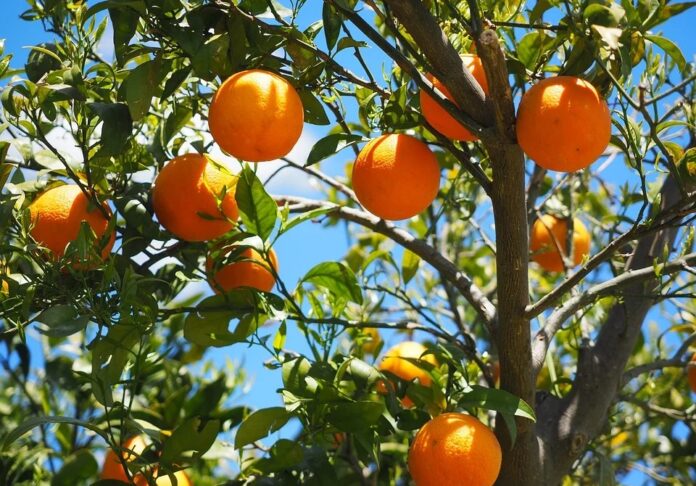A team of scientists from the Institute of Sustainable Agriculture (IAS-CSIC), the Center for Research on Desertification (CIDE-CSIC-UV-GV), the Segura Center for Edaphology and Applied Biology (CEBAS-CSIC) and the University of Melbourne in Australia has developed a system that quantifies the water status of trees from the combination of thermal photographs taken from the air and on the ground. In addition, this information provides the farmer with more efficient irrigation management and greater knowledge of the areas most sensitive to lack of water in which to place sensors that warn of this situation.
This method extracts thermal data from images taken in limited areas of the soil and the plant canopy, that is, the layer of branches and leaves formed by the treetops. Specifically, the cameras take images that scan the temperature of both surfaces. The photographs, transferred to a computer, record the different levels of heat that each part of the tree accumulates and show them on a color scale: the coldest areas in the blue range and the warmest areas in yellow, orange and red tones.
Thus, these thermal images allow evaluating the temperature of each of the trees within a plot and also of the soil. “This indicator is associated with the degree of stress, so that the higher the temperature of a tree, the more stressed it is”explains the researcher at the Institute of Sustainable Agriculture Victoria González Dugo, co-author of the study.
In order to observe the areas most sensitive to water scarcity, they made a first flight over a field of peach trees to take images under abundant irrigation conditions and a second after a few days without watering the area.
Images from the air to collect the necessary information from the trees
To collect the necessary information from the trees and the terrain, they used thermal and multispectral cameras installed on board a small plane. “This type of device has sensors capable of capturing information in various regions of the light spectrum that allows us to calculate different vegetation indices related to the health and well-being of plants”points to the Discover Foundation the researcher of the Research Center on Desertification Juan Miguel Ramírez-Cuesta, one of those responsible for this work.
Specifically, these aerial images reflect the functioning of the stomata of the leaves, pores on the surface of the plants. “When stressed, the tree doesn’t transpire and heats up. That heat is reflected in the aerial images concentrated in the treetops and in the photographs of the leaves taken on the ground”points out Ramírez-Cuesta.
The experts verified that the precision of the aerial images makes it possible to identify the crowns of individual trees and to separate the soil from the vegetation. “This is not possible from other types of lower resolution images such as those offered by many satellites. The information provided by the images taken from the ground is more precise, but it is a point measurement that is difficult to extrapolate to the entire plot”qualifies Ramírez-Cuesta.
The data obtained from thermal aerial images were processed in the Laboratory of Quantitative Remote Sensing Methods (Quantalab) of the Institute of Sustainable Agriculture, led by Pablo Zarco Tejada. There, the experts generated a mosaic with all the images acquired in order to analyze the entire area as a whole.
Information from the ground
In the field, they measured the water status of the leaves with pressure chambers. To do this, they isolated a tree leaf in an aluminum bag. After an hour without contact with the outside, that is, neither sunlight nor room temperature, they made some cuts and placed her in the pressure chamber. “At this point, pressure is applied until the petiole, an appendage that joins the leaf and the stem, expels a drop of water. The more pressure you have to exert to cause water exudation, the more stress the blade experiences”details Ramírez-Cuesta.
The results of the study, entitled ‘Assessment of peach trees water status and leaf gas exchange using on-the-ground versus airborne-based thermal imagery’ and published in the magazine Agricultural Water Management, revealed that the information from aerial thermal images allows for more precise tracking than those taken from the ground. However, leaf gas exchange is best captured by cameras used in the field.
Combination of both types of images
In this sense, experts advocate a combination of both types of images. “Each one contributes a specific value, so the joint use of both offers an optimal and more complete result. Portable thermal cameras can capture the shady and sun-exposed parts of the canopy independently thanks to their side view but typically capture only one tree per image. However, those used from the air cover the entire surface allowing different areas to be compared”points out Ramírez-Cuesta.
On the other hand, the information provided by these thermal images helps to detect which specific areas of the plot are most affected by water stress, allowing the establishment of more efficient irrigation strategies. “Based on this, the farmer could decide which are the most sensitive points to drought and place sensors there that serve as a warning of water scarcity in the soil”clarifies Ramírez-Cuesta.
Font: F. Discover, DICYT,
Reference article: https://www.dicyt.com/noticias/a-system-combines-thermal-aerial-and-terrestrial-images-to-study-drought-in-trees










![[Img #74664]](https://thelatestnews.world/wp-content/uploads/2024/12/James-Watson-The-controversial-genius-behind-the-double-helix-150x150.jpg)




![[Img #74664]](https://thelatestnews.world/wp-content/uploads/2024/12/James-Watson-The-controversial-genius-behind-the-double-helix-300x200.jpg)